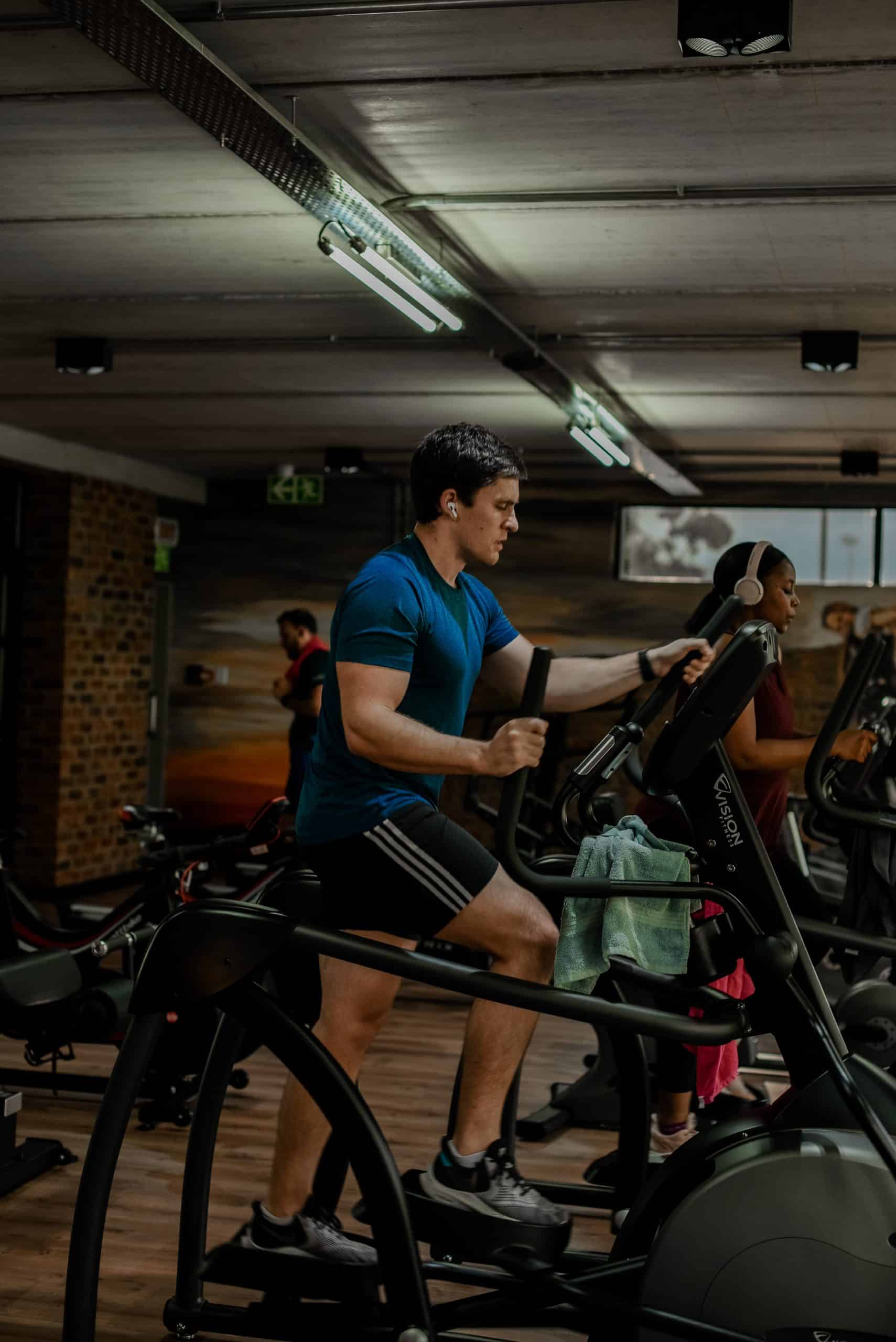1. Change Up Your Workout Routine
Why it works: One of the most common causes of plateaus is doing the same workouts over and over. Your body adapts to routine exercises, and you stop seeing progress. This is called the principle of adaptation, and it’s the reason why your initial gains slow down after a few weeks or months.
How to break the plateau: It’s time to switch things up! Here are some ideas:
- Try new exercises: If you’ve been focusing on the same movements (e.g., squats, bench presses), incorporate new exercises that target the same muscles in different ways (e.g., lunges, push-ups, or kettlebell swings).
- Change your workout format: If you’re used to traditional sets and reps, try switching to circuit training, supersets, or a HIIT (High-Intensity Interval Training) workout.
- Vary your intensity: Mix in high-intensity days with lower-intensity recovery sessions, like yoga or swimming, to allow your body to recover while still working on fitness.
The key is to introduce novelty and variety. By doing so, you’ll challenge your muscles in new ways, which can spark new growth and progress.
2. Increase Workout Intensity (Progressive Overload)
Why it works: Progressive overload is the idea of gradually increasing the intensity of your workouts over time. When you stop challenging your muscles with heavier weights, faster speeds, or more repetitions, you stop growing.
How to break the plateau: You need to make sure you’re constantly pushing your limits. Here’s how:
- Add weight: Increase the amount of weight you’re lifting, even if it’s just a small increment (2-5 lbs).
- Increase reps or sets: If you’ve been doing 3 sets of 10 reps, try increasing it to 4 sets of 12 reps or aim for a higher rep range.
- Reduce rest time: Shorten the rest between sets to increase intensity, or switch to compound movements that involve multiple muscle groups (e.g., deadlifts or squats).
- Improve form: Make sure you’re performing exercises with perfect form, as poor technique can limit your progress and lead to injury.
Pro tip: Track your progress regularly (weekly or monthly) so you can see the improvements, whether it’s lifting heavier weights, performing more reps, or completing a workout faster.
3. Prioritize Recovery and Sleep
Why it works: Recovery is where the magic happens. Your muscles don’t grow during the workout; they grow during rest and recovery. If you’re not allowing enough time for your body to recover, you’re going to hit a wall in your progress.
How to break the plateau: Focus on improving your recovery habits:
- Get enough sleep: Aim for 7-9 hours of quality sleep per night. Sleep is essential for muscle repair, hormone regulation, and mental clarity.
- Active recovery: On rest days, engage in low-intensity activities like walking, swimming, or yoga. These activities increase blood flow to muscles without overtraining them.
- Stretching and foam rolling: Incorporate regular stretching and foam rolling into your routine to improve flexibility, prevent tightness, and reduce muscle soreness.
Pro tip: Take a deload week every 4-6 weeks where you reduce intensity or volume to give your body a break and avoid burnout.
4. Focus on Nutrition
Why it works: Nutrition plays a huge role in your ability to break through a plateau. Without proper nutrition, your body may not have the fuel or nutrients it needs to build muscle or recover effectively. Whether your goal is fat loss, muscle gain, or strength, food is a critical factor in achieving progress.
How to break the plateau: Make sure your nutrition supports your fitness goals:
- Eat enough protein: Protein is essential for muscle repair and growth. Aim for 0.8-1 gram of protein per pound of body weight.
- Balance macronutrients: Don’t just focus on protein—make sure you’re eating the right balance of carbs and healthy fats to fuel your workouts and recovery. Complex carbs (like sweet potatoes and oats) will give you sustained energy during your workouts, while healthy fats (like avocado and olive oil) support hormonal balance.
- Track your calories: If you’re trying to lose weight, you need to create a calorie deficit, and if you’re trying to gain muscle, you need to be in a slight calorie surplus. Use a food tracker or app to ensure you’re eating enough (or not too much) to meet your goals.
- Stay hydrated: Dehydration can slow down your performance and recovery. Drink plenty of water throughout the day, especially during and after workouts.
Pro tip: Consider consulting a nutritionist or dietitian if you’re unsure about your diet. They can help you fine-tune your meals to maximize performance.
5. Set New Goals
Why it works: Plateaus often happen because you’ve lost sight of your motivation or purpose. Setting new, challenging goals will reignite your passion and give you something to strive for.
How to break the plateau: Set SMART (Specific, Measurable, Achievable, Relevant, Time-bound) goals that push you to the next level:
- Be specific: Instead of vague goals like “get stronger,” set goals like “bench press 200 lbs in 6 weeks” or “run 5 miles in 40 minutes.”
- Make your goals measurable: Keep track of your progress so you can see how far you’ve come.
- Adjust your goals over time: As you achieve your goals, set new ones to keep progressing. Whether it’s lifting heavier, running faster, or mastering a new exercise, always have something to strive for.
Pro tip: Share your goals with a friend or trainer for accountability, and celebrate small milestones along the way.













